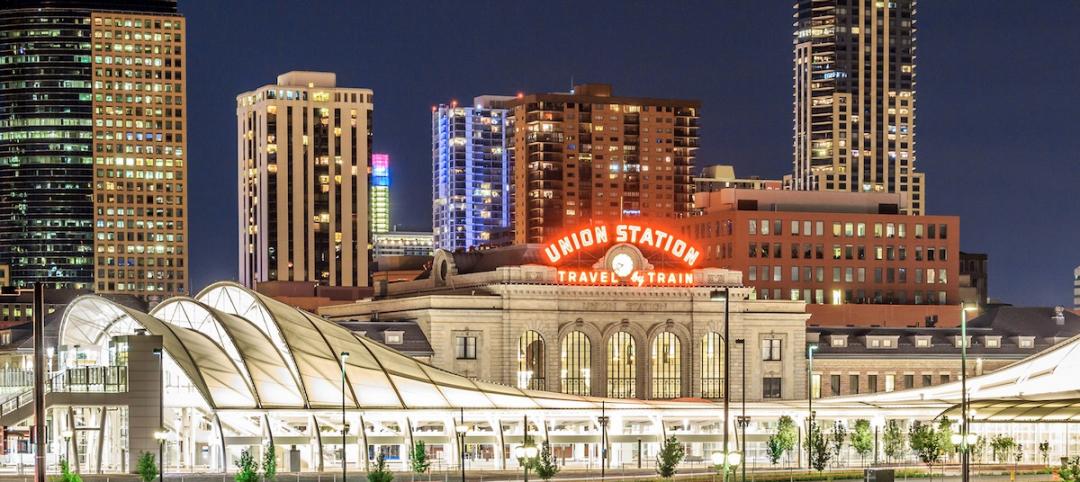America’s crumbling roads, decrepit bridges, aged water systems. Our deficient dams, underserved levees, and woeful wastewater treatment plants. For nearly three decades, the American public has heard ad nauseam about the dreadful condition of the nation’s infrastructure—from airports to railways to hazardous waste facilities.
Since 1988, the American Society of Civil Engineers, through its Infrastructure Report Card, has shone a spotlight on the alarming shortfall in funding and resources to operate, maintain, and modernize the country’s infrastructure network. ASCE’s latest report card, released in March, scores the nation’s overall infrastructure at a D+ (it’s never scored higher than C). The price tag to modernize the country’s infrastructure systems: a whopping $4.59 trillion over 10 years, more than triple the cost from the 2001 report.
Of the 16 infrastructure sectors that ASCE evaluates quadrennially, only one—K-12 schools—is buildings-focused. The trade group scored the nation’s 100,000 public school buildings at a collective D+, citing an annual investment shortfall of $38 billion to maintain and upgrade facilities and a backlog of necessary improvements (53% of schools require upgrades to reach “good” condition).
Left out of this ongoing national debate over infrastructure—and the trillions of dollars of public funding that is expected over the next few decades—are the nation’s other public buildings: the libraries, community centers, courthouses, community college buildings, affordable housing developments, and justice facilities.
These, too, are critical to the safety, security, and vibrancy of cities and communities. And as is the case with the nation’s public schools and major infrastructure sectors, these so-called “social infrastructure” buildings are being neglected, with years of deferred maintenance, patchwork repairs, dwindling CapEx and OpEx budgets, and even the weakening and repeal of building codes—especially those related to resiliency and sustainability.
Thrusting the nation’s social infrastructure into the spotlight has been a recent crusade of the leadership at the American Institute of Architects. AIA kicked off this initiative in November 2016 with a national poll of 2,108 U.S. adults to assess the importance of public buildings to their communities. The findings: more than 80% see public buildings as part of the nation’s infrastructure, and 94% agree that well-supported buildings are important to their communities (whether they’re willing to open their wallets to help fund such
efforts is another question).
AIA has had its share of controversy during the past 12 months, most notably the post-election statements that riled some of its members. But AIA leadership deserves a pat on the back for its efforts with this campaign. Let’s just hope their proclamation resonates with the nation’s policymakers.
Related Stories
Giants 400 | Aug 4, 2015
GIANTS 300 REPORT: Top 64 Architecture/Engineering Firms
Stantec, HOK, and Callison RTKL top Building Design+Construction's 2015 ranking of the largest architecture/engineering firms in the United States.
Giants 400 | Aug 4, 2015
GIANTS 300 REPORT: Top 106 Architecture Firms
Gensler, Perkins+Will, and Kohn Pedersen Fox top Building Design+Construction's 2015 ranking of the largest architecture firms in the United States.
Giants 400 | Aug 4, 2015
ARCHITECTURE GIANTS: 21 practice management innovations from architecture Giants
Design firms have gone all out with management innovations in the last year. Check out which ones might work for your firm.
Architects | Aug 4, 2015
Frank Lloyd Wright School of Architecture closer to independent incorporation
The school is halfway to its first fundraising milestone, but is facing a major deadline at end of this month.
Industrial Facilities | Aug 3, 2015
Architect Jacques Rougerie envisions floating city to function as roving laboratory
The manta ray-shaped vessel will be completely self-sustaining, run on marine energy, and produce no waste.
Cultural Facilities | Aug 3, 2015
Funding needed for Washington's Desert Storm memorial
The National Desert Storm Memorial Foundation has a $25 million goal for the project.
Sports and Recreational Facilities | Jul 31, 2015
Zaha Hadid responds to Tokyo Olympic Stadium controversy
“Our warning was not heeded that selecting contractors too early in a heated construction market and without sufficient competition would lead to an overly high estimate of the cost of construction,” said Zaha Hadid in a statement.
Architects | Jul 30, 2015
The Lego Architect: Book offers simple how-to steps for recreating iconic buildings with Legos
The book features famous buildings accompanied with a photograph and drawing of the Lego model of the building, and a list of all the Lego pieces needed to complete a model of the building.
Transit Facilities | Jul 30, 2015
Snøhetta designs ring-shaped cable car station in Italian Alps
In Snøhetta’s design, two cylindrical rings embedded into the existing topography, each at different elevations, will be connected by a cable car. During the minute-long cable car journey, passengers can enjoy views of the city and of the Italian Alps.
Office Buildings | Jul 29, 2015
Design plans for Fannie Mae’s new HQ revealed
The developer/owner, Carr Properties, envisions a 1-million-sf plus mixed-use center with a large retail pavilion.

















